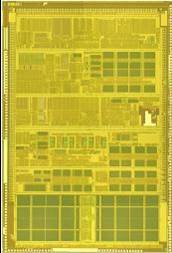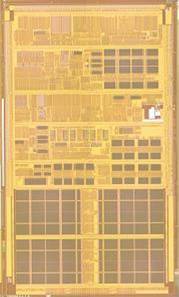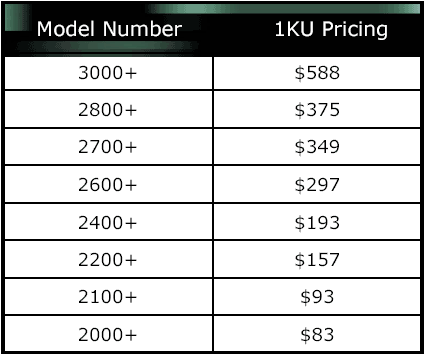AMD's Athlon XP 3000+: Barton cuts it close
by Anand Lal Shimpi on February 10, 2003 2:24 AM EST- Posted in
- CPUs
The other thing the larger cache brings to the table is a much larger die; unfortunately, this die drives the manufacturing cost of Barton noticeably higher than the previous Thoroughbred core. Whereas Thoroughbred was made up of around 37.6 million transistors, Barton weighs in with a plentiful 54.3 million transistors. The added transistors increases the die size from 84 mm^2 to approximately 101 mm^2. Recently, we had the opportunity to ask AMD's CTO, Fred Weber about manufacturing, and one of the tidbits of information he left us with was that AMD's manufacturing sweet-spot exists between 50 mm^2 and 100 mm^2. Once dies get above 100 mm^2, they start to be significantly more expensive than those that can fit within that 50 - 100 mm^2 range; as you can tell, Barton is at the very edge of that scale, making it difficult for AMD to maintain as large of a price advantage over Intel.
 |
 |
Being on the edge of this sweet-spot doesn't mean AMD will be selling Athlon XPs for as much as Intel does their Pentium 4s, but it does mean that prices either have to go up to compensate or that profits have to go down. Given AMD's current financial status, we would say that the former option is more likely.
Here's AMD's pricing structure for the Athlon XP line as of the time of publication:

As you can see, the Athlon XP 3000+ is not a cheap part, but neither is the 3.06GHz Pentium 4 it's up against.
Now that you've been exposed to Barton at a high level, let's talk about its major attraction - this added L2 cache.










1 Comments
View All Comments
Anonymous User - Tuesday, October 21, 2003 - link
Curious? Athlon XP 3000+ (2.167GHz) Barton is running with Intel's P4 2.5 and above and keep up? Intresting